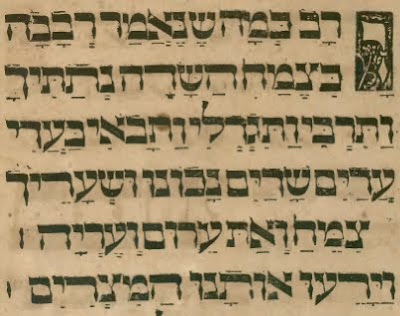במתי מעט -- This, as well, falls into the pattern of one element in the short narrative functioning as an arrow pointing at the longer arrow. This is a description of how Yaakov went down with 70 souls, at the beginning of the Galus in Egypt. Sometimes, 70 is a lot, and is the number signifying many. Indeed, before confronting Esav, he related how he started out alone, with only his staff, and yet now, he is comprised of two camps. But perhaps this is relative. It is a lot for a family, perhaps. But it is quite small for a nation! The text pointed at goes from a countable number, 70, to the multitude of the stars. This is, then, perhaps another transition from genai to shevach, and is part of the more general theme of developing into a nation.
ויהי שם -- the derasha is being made not on the word gadol which was cited in this version of the text, but on the word גוי. They became a people. And perhaps on the word גוי combined with the word שם. While there, they became their own nation. They were identifiable, and thus began to develop a national identity. (The citation of the word גדול likely reflects an uncertainty of whether that word should be part of the citation for the next derasha, or not.)
גדול ועצום -- this haggadah, from 1590, appears to cite the pasuk wrong in this derasha! Yet when they cite the whole verse, they get it right. In fact, the Haggadah is not citing the pasuk incorrectly. Rather, it is being true to the Sifrei. For if you look in the Sifrei, you will see that it, too, cites it as gadol ve'atzum.
So perhaps the Sifrei cited the pasuk incorrectly? This is plausible. However, we should realize that in the Samaritan Torah, the text is indeed גדול ועצום ורב. Because of lectio difficilior, I believe that our Masoretic text is accurate here. However, this is an indication that the Sifrei was darshening a non-masoretic text, something we have already seen on parshablog a number of times.
The small printing of ועצום may be an attempt to fit the word on the line; or to give more emphasis to גדול in the derasha which follows. But I have a suspicion that, in part, it reflect uncertainty that this word should be cited as it was cited.
The indication that they increased to such a great degree may come from multiple sources. I favor a simple linkage between עצום and ויעצמו. But perhaps גדול can come into the picture, as gadol atzum, a mighty increase, proved by all these languages. This latter does not work out so well if the source pasuk was believed to be גדול ועצום, as discussed, for then עצום could not modify גדול. Rather, it stands alone, modifying גוי. Perhaps the multiple languages of increase, גדול, עצום, and רב is reminiscent of the multiple languages of increase.
I wonder if עוצם as a show of strength is intended, so as to lead into the Egyptians' fearful reaction.
ורב -- the derasha is based on the word ותרבי. Why cite this pasuk over any other that has the word רב? Because the point, here, is not the increase. Rather, it means mature. For a girl, it is as described. For a people, it is becoming a nation.
Note that in this same Haggadah, they only cite this one pasuk. They do not cite the bedamayich chayi pasuk. This is because it was initially only intended to be a prooftext about maturity. Only later did it become a reference to the dual blood of korban Pesach and bris Milah.



No comments:
Post a Comment